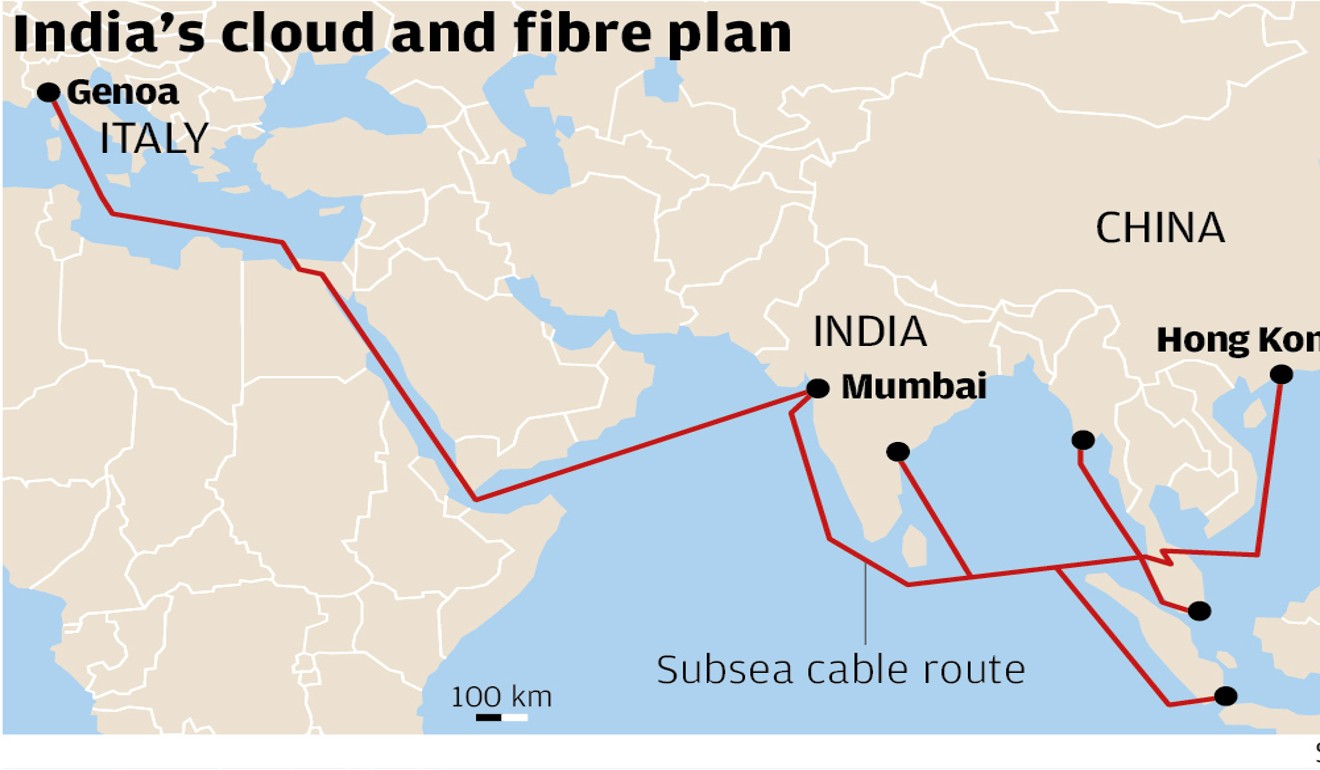
Cloud and fibre: India’s answer to China’s Belt and Road Initiative
India’s Global Cloud Xchange will build a submarine fibre-optic cable system spanning 16,650km from Hong Kong to Italy

Telecommunications services provider Global Cloud Xchange (GCX) on Wednesday unveiled plans to build a US$500 million submarine fibre-optic cable system, stretching 16,650 kilometres from Hong Kong to Italy, which the company expects to become a key infrastructure for India’s version of the Belt and Road Initiative.
GCX, a subsidiary of India’s Reliance Communications, owns the world’s largest private undersea cable network that spans more than 67,000km.
The Eagle cable system represents the centrepiece of the ambitious “cloud and fibre initiative” of GCX, which has already completed negotiations for more than 50 per cent of the project with other investors such as telecommunications operators and technology companies, Reliance Communications chief executive officer Bill Barney told the South China Morning Post.
While the Eagle system is a private-sector enterprise, it would help advance India’s own agenda of connectivity and cooperation within Asia and beyond. India remains sensitive about the manner in which China’s Belt and Road Initiative is being pursued in its neighbourhood, which includes Pakistan-occupied Kashmir.
Paul Haswell, a partner at international law firm Pinsent Masons, said China’s Belt and Road plan included building a broader set of infrastructure on ancient trade routes – roads, ports, railways and telecommunications hubs – than what Indian companies have put in place to date.
Introduced by President Xi Jinping in 2013, the Belt and Road Initiative covers the New Silk Road connecting China with Europe overland and the Maritime Silk Road that links the mainland to countries in Southeast Asia, Africa and Europe.

Barney, who is also chairman of GCX, said the Eagle system would deliver the latest undersea cable technology to meet rising demand for cloud computing services and bandwidth capacity around the world.
“Nearly half the world’s population is reachable within a short distance from India’s borders, giving the country a strategic edge in the new digital era,” said Barney. “Our initiative levels the playing field for India’s tech companies to compete in the new digital order and play a pivotal role in the anticipated hyper growth ... across the emerging markets corridor [encompassing the Middle East as well the large Asian markets of China, India and Indonesia].”

Cloud services enable companies to buy, sell, lease or distribute over the internet a range of software and other digital resources as an on-demand service, just like electricity from a power grid.
“Digital transformation of industries is driving accelerated growth of cloud services in the Asia-Pacific,” said Manoj Menon, managing director at Frost & Sullivan Asia-Pacific. “China, along with the emerging economies of India, Indonesia and Thailand, are the front runners of this growth.”
The new Eagle cable system will extend east about 7,750km from Mumbai via Thailand to Hong Kong, with segments that connect Singapore and the Philippines. The cable’s 8,900km route west connects Mumbai to landing points in Egypt and Italy.
The infrastructure, which will be ready for service by the end of 2020, will allow companies to rent and own capacity with speeds ranging from as low as 10 gigabits per seconds to hundreds of gigabits per second.